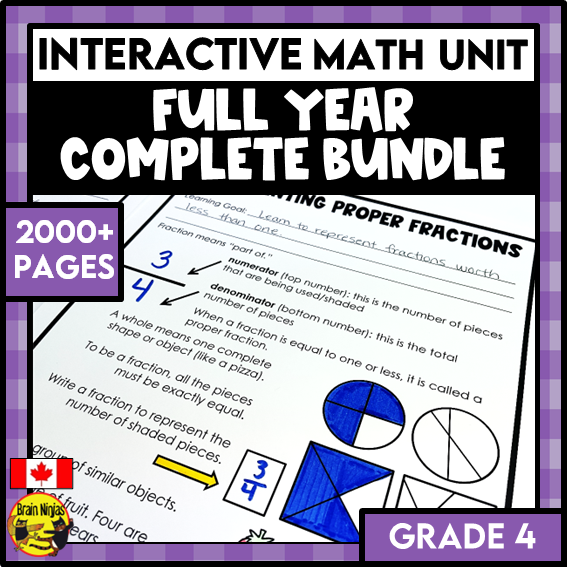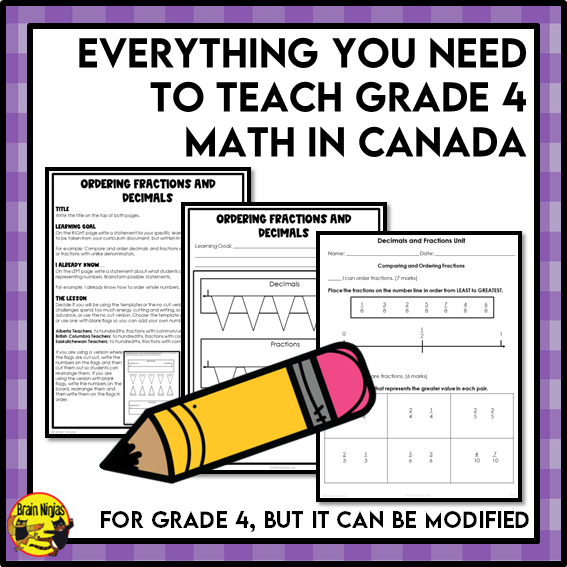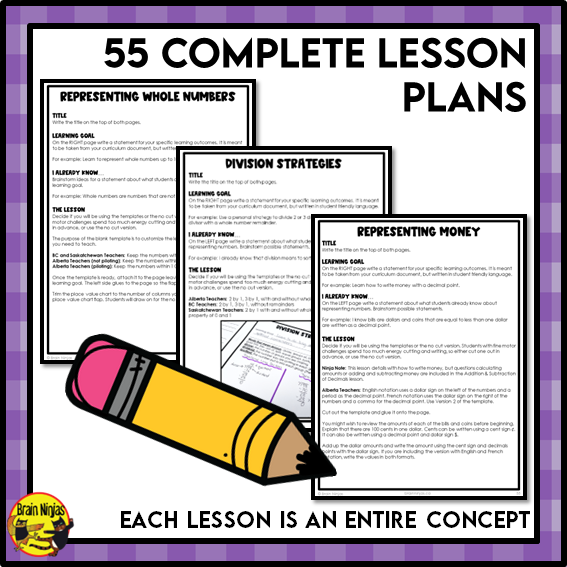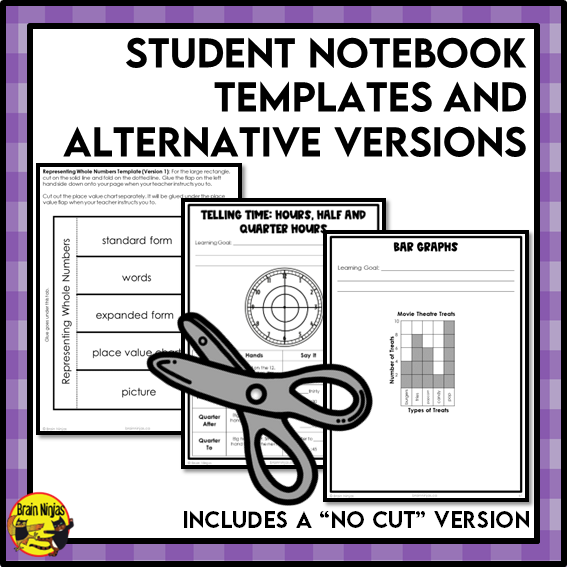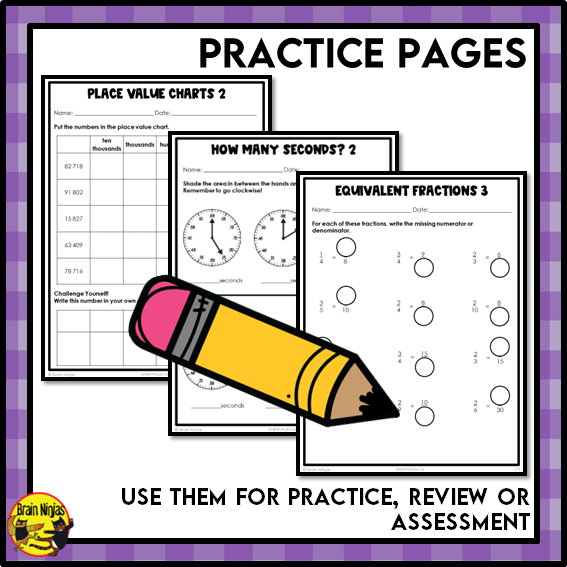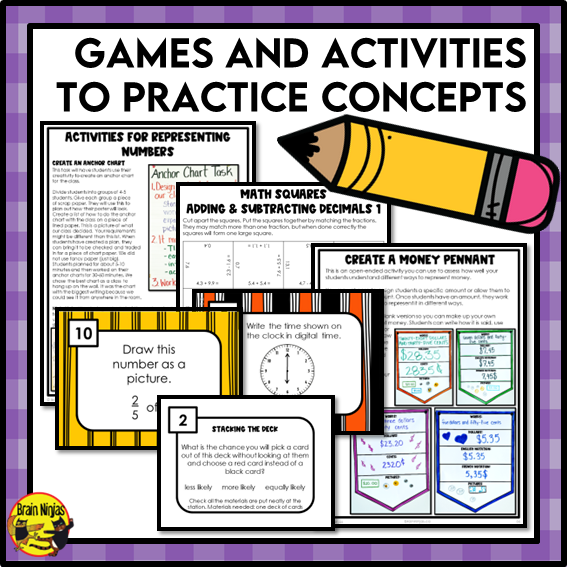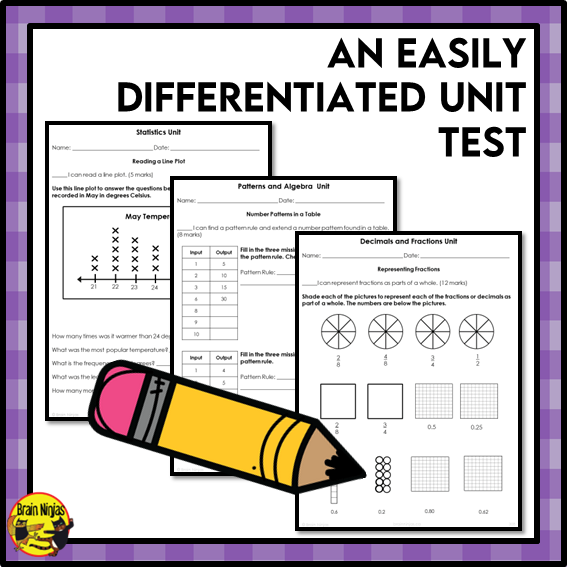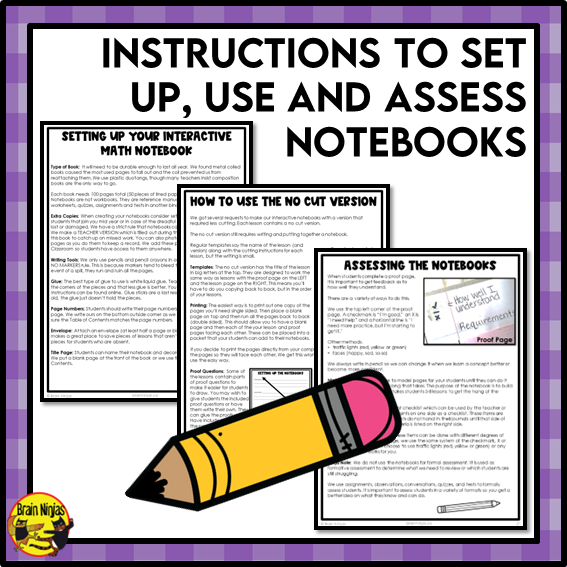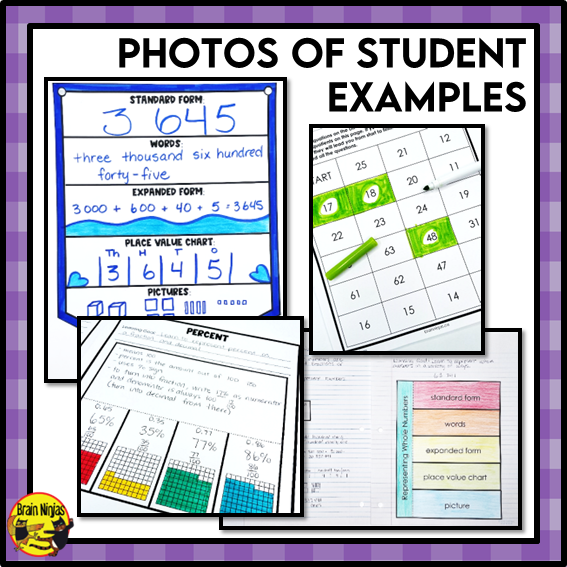Year Long Math Interactive Math Unit Bundle | Paper | Grade 4
Year Long Math Interactive Math Unit Bundle | Paper | Grade 4
Couldn't load pickup availability
Stop searching for your Canadian Grade 4 math lessons! Everything you need to teach, practice, and assess your entire year of math lessons is included in this print-and-use bundle. Teach number sense, operations, patterns, and algebra (and so much more). Your planning for the year is already done for you!
This all-inclusive resource includes:
- a complete lesson on how to set up, use, and assess interactive math notebooks. These are hands-on paper notebooks that your students can use all year long.
- complete lesson plans with modifications for differentiation.
- student templates (with differentiated options).
- student worksheets (with various levels of difficulty so you can differentiate).
- photographs of student examples.
- activities and games to reinforce the concepts.
- answer keys.
- Build Your Own Unit Test: Several pages with answer keys are included with opportunities to mix and match to differentiate for all of your individual students.
- SI Notation for Canadian teachers. Spaces are used between place values instead of commas. For example, 34 492 is used instead of 34,492.
- metric units.
- Canadian spellings.
The specific units are:
Number Concepts: representing whole numbers (standard form, words, expanded form, pictures, place value charts, Base 10), ordering whole numbers (greatest/least, greater than/less than), rounding whole numbers (to specific place values/front end rounding); representing numbers from 1 000 to 100 000.
Number Operations: mental math strategies, estimation strategies, addition strategies with 10 000, subtraction strategies within 10 000, multiples, prime and composite numbers, long multiplication strategies, long division strategies (with and without remainders), order of operations (with whole numbers and operations only),
Decimals and Fractions: representing decimals to hundredths, decimals place value to hundredths, addition and subtraction of decimals to hundredths, rounding decimals, representing proper fractions (parts of a whole, parts of a set), equivalent fractions, converting fractions and decimals to hundredths, ordering fractions and decimals with common and uncommon denominators, percent within 100
Patterns and Algebra: pictorial and concrete patterns, number patterns, sorting numbers by attributes: Venn diagrams, Carroll diagrams, expressions with variables, preservation of equality, solving for an unknown value.
Statistics and Probability: first-hand data and second-hand data, ways to organize data in tables, with tally marks, lists, numerically and organized lists; frequency and range; one-to-one and many-to-one correspondence; reading and creating bar graphs; reading and creating line plots (dot plots); reading and creating pictographs; probability: chance and uncertainty
Time and Elapsed Time: reading a calendar and writing dates, 12/24-hour clocks and AM/PM, telling time: hours, half and quarter hours, telling time: minutes, about elapsed time, calculating elapsed time
Measurement: metric referents, metric conversions (includes all metric unit prefixes), length, perimeter of rectangles, regular and irregular polygons and complex shapes, area of rectangles, the volume of right rectangular prisms, capacity (mL and L), classifying, measuring and drawing types of angles (acute, obtuse, straight, right)
Geometry: types of lines (horizontal, vertical, diagonal, perpendicular, parallel and intersecting), congruency (shapes, side lengths, angles, edges), line symmetry and plane symmetry of shapes, objects and patterns, polygons (triangles, quadrilaterals, pentagons, hexagons, octagons), types of triangles (equilateral, isosceles, scalene, acute, right, obtuse), quadrilaterals (trapezoids, kites, parallelograms, rhombuses, rectangles, squares), 3D objects (cones, cylinders, spheres, prisms and pyramids), building nets of 3D objects, single-event transformations: translations (slides), rotations (turns) and reflections (flips),
This resource aligns with:
- Alberta Mathematics Curriculum Grade 4 ©2022
- British Columbia Mathematics Curricular Competencies Grade 4
- Saskatchewan Mathematics Curriculum Grade 4
This resource supports:
- any Canadian Grade 4 math class.
- math classes in the Yukon and Northwest Territories (though it recommended you use the province’s curriculum your territory recommends).
Need a different grade level?
- Year-Long Interactive Math Unit Bundle Grade 3
-
Year-Long Interactive Math Unit Bundle Grade 4
- Year-Long Interactive Math Unit Bundle Grade 4/5
- Year-Long Interactive Math Unit Bundle Grade 5
- Year-Long Interactive Math Unit Bundle Grade 5/6
- Year-Long Interactive Math Unit Bundle Grade 6
Where do you teach? We have worksheet sets that support this resource.
-
Alberta Full Year Worksheet Bundle Grade 4
-
British Columbia Full Year Worksheet Bundle Grade 4
- Saskatchewan Full Year Worksheet Bundle Grade 4
Not sure if this is the right resource for you? Download our free alignment guide.
Ninja Note: This file is a ZIP file. It contains all the PDF files that contain each unit. Buyers need to download the ZIP and extract the PDF files to a computer. This product requires printing for students to use.
Have a question? Before contacting us, check our Frequently Asked Questions page.
